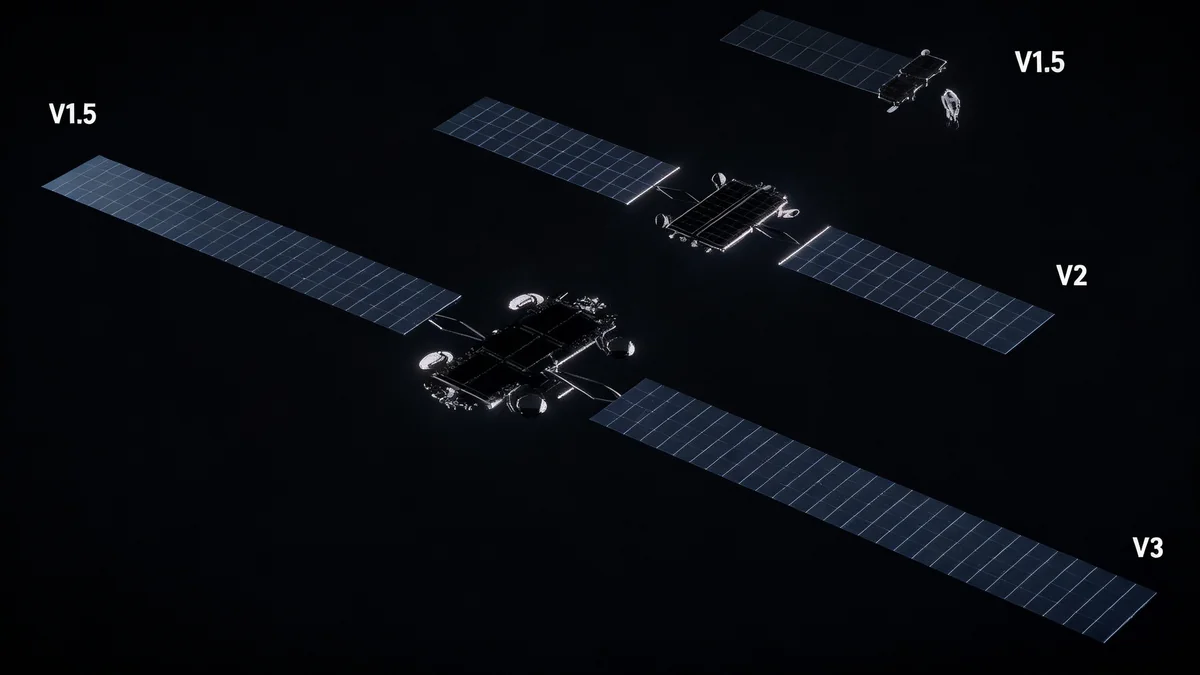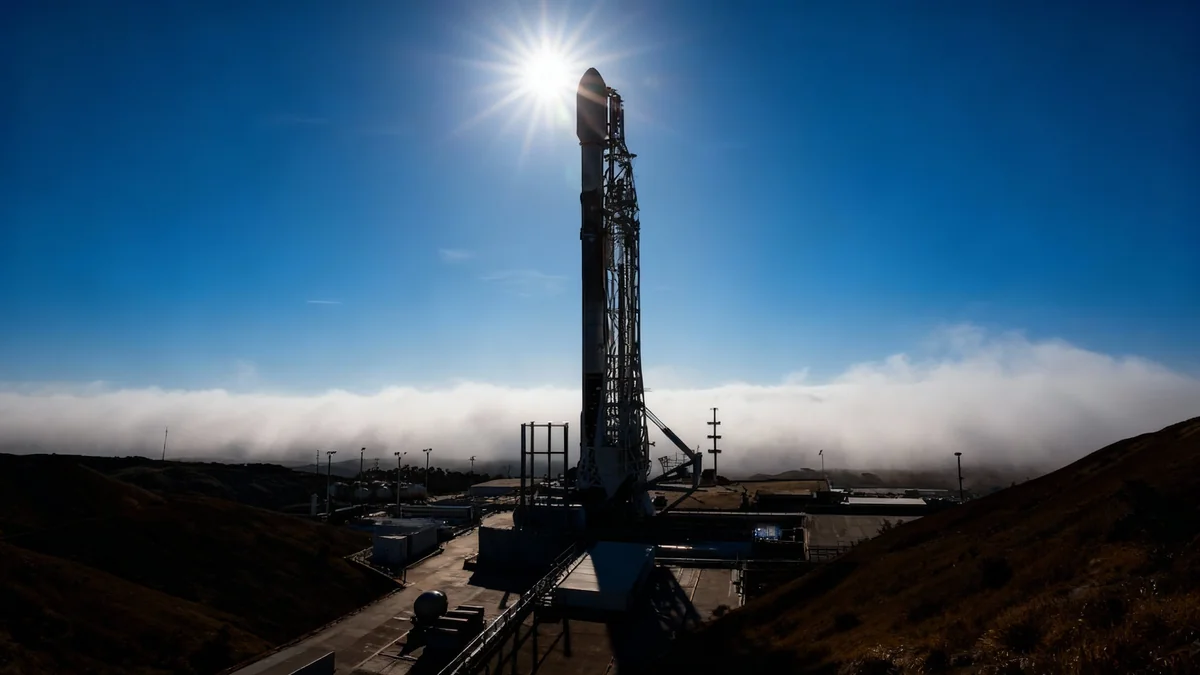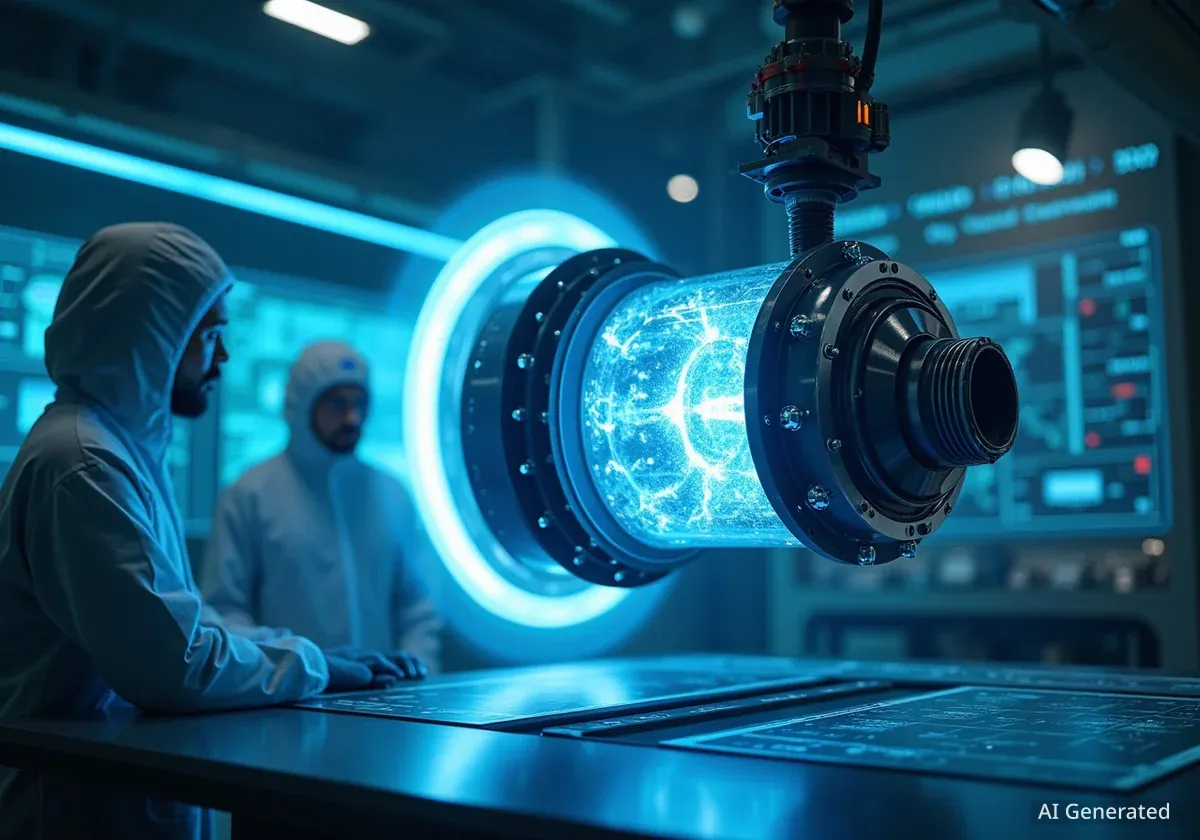SpaceX is preparing to launch a Falcon 9 rocket from Cape Canaveral Space Force Station, carrying a batch of internet satellites for Amazon's Project Kuiper. The mission is scheduled for tonight with a targeted liftoff time of 8:41 p.m. from Launch Complex 40.
While the weather forecast for the launch site has improved, mission managers are closely monitoring rough sea conditions in the Atlantic Ocean. The sea state could impact the critical landing of the Falcon 9's first-stage booster on an autonomous drone ship.
Key Takeaways
- Mission: SpaceX is launching 28 satellites for Amazon's Project Kuiper internet constellation.
- Launch Vehicle: A flight-proven Falcon 9 rocket will be used for the mission.
- Launch Site: The rocket will lift off from Launch Complex 40 at Cape Canaveral Space Force Station, Florida.
- Target Time: Liftoff is scheduled for 8:41 p.m., with a backup window extending until 11:15 p.m.
- Primary Concern: High sea states in the booster recovery zone pose a potential risk to the mission, which could lead to a postponement.
Mission Details and Objectives
The primary goal of this mission is to deploy 28 satellites into low-Earth orbit (LEO) for Amazon's Project Kuiper. This initiative is designed to provide global broadband internet service, competing directly with SpaceX's own Starlink network.
The Falcon 9 rocket will perform a series of engine burns to carry the payload to the correct orbital altitude and inclination. Following stage separation, the second stage will continue to orbit while the first stage performs a controlled descent back to Earth.
The Importance of Booster Recovery
A central component of SpaceX's operational strategy is the recovery and reuse of its Falcon 9 first-stage boosters. This approach significantly reduces the cost of spaceflight and allows for a high launch frequency.
For this mission, the booster is planned to land on a drone ship positioned hundreds of kilometers offshore in the Atlantic. However, the original article highlighted concerns about rough seas. High waves and strong winds can make a precision landing on the floating platform difficult or impossible.
Booster Recovery Facts
- SpaceX has successfully landed its boosters over 200 times.
- Recovered boosters can be refurbished and flown again in a matter of weeks.
- If sea conditions are too dangerous, SpaceX may choose to scrub the launch or, in rare cases, expend the booster by not attempting a landing.
A decision to postpone the launch would prioritize the safety and recovery of the valuable booster. Losing a booster would represent a significant financial loss and disrupt the vehicle rotation for future missions.
Amazon's Project Kuiper Constellation
Project Kuiper is Amazon's ambitious plan to build a satellite constellation aimed at delivering fast, affordable internet to unserved and underserved communities around the world. The project involves deploying more than 3,200 satellites into LEO.
This launch is part of a series of missions to build out the initial phase of the network. While Amazon has its own heavy-lift launch vehicle, New Glenn, in development through its Blue Origin subsidiary, it has secured launch contracts with multiple providers, including SpaceX, to meet its deployment deadlines.
A Competitive Partnership
The use of a SpaceX Falcon 9 rocket to launch a competing satellite network highlights the current dynamics of the commercial space industry. SpaceX's Falcon 9 is one of the most reliable and readily available launch vehicles on the market, making it an essential partner even for its direct competitors.
The Kuiper System Architecture
The Kuiper system is designed to operate on three main components:
- Satellites: A large constellation in low-Earth orbit.
- Ground Network: A global network of antennas, known as gateway stations, that connect the satellites to the internet.
- Customer Terminals: Affordable and easy-to-install antennas that customers will use to receive service.
Amazon has stated its goal is to begin offering initial services to customers once a sufficient number of satellites are in orbit, making each successful launch a critical step toward that objective.
Launch Conditions and Weather Factors
Rocket launches from Florida's Space Coast are highly dependent on weather conditions. While the local forecast at Cape Canaveral has improved, several factors are continuously monitored up until liftoff.
"With an improved local weather forecast, SpaceX crews aim to launch a Falcon 9 rocket tonight... But will rough seas offshore force another postponement by thwarting SpaceX's booster-landing attempt atop a drone ship?"
Launch weather officers from the U.S. Space Force's 45th Weather Squadron provide detailed forecasts that look at multiple criteria. These include constraints related to ground winds, upper-level winds, precipitation, and the risk of lightning.
Offshore Conditions as a Key Variable
For SpaceX missions involving a drone ship landing, the weather conditions hundreds of miles offshore are just as important as the weather at the launch pad. The autonomous spaceport drone ships, such as 'A Shortfall of Gravitas' and 'Just Read the Instructions', must maintain a stable position to safely receive the descending booster.
Swells and high winds can cause the drone ship to move unpredictably, creating an unsafe landing environment. In such cases, the mission is typically delayed until the sea state improves. This ensures the booster, a key asset in SpaceX's launch architecture, can be successfully recovered for future flights. The backup launch opportunities, available until 11:15 p.m., provide flexibility to wait for a more favorable window for both launch and recovery.





